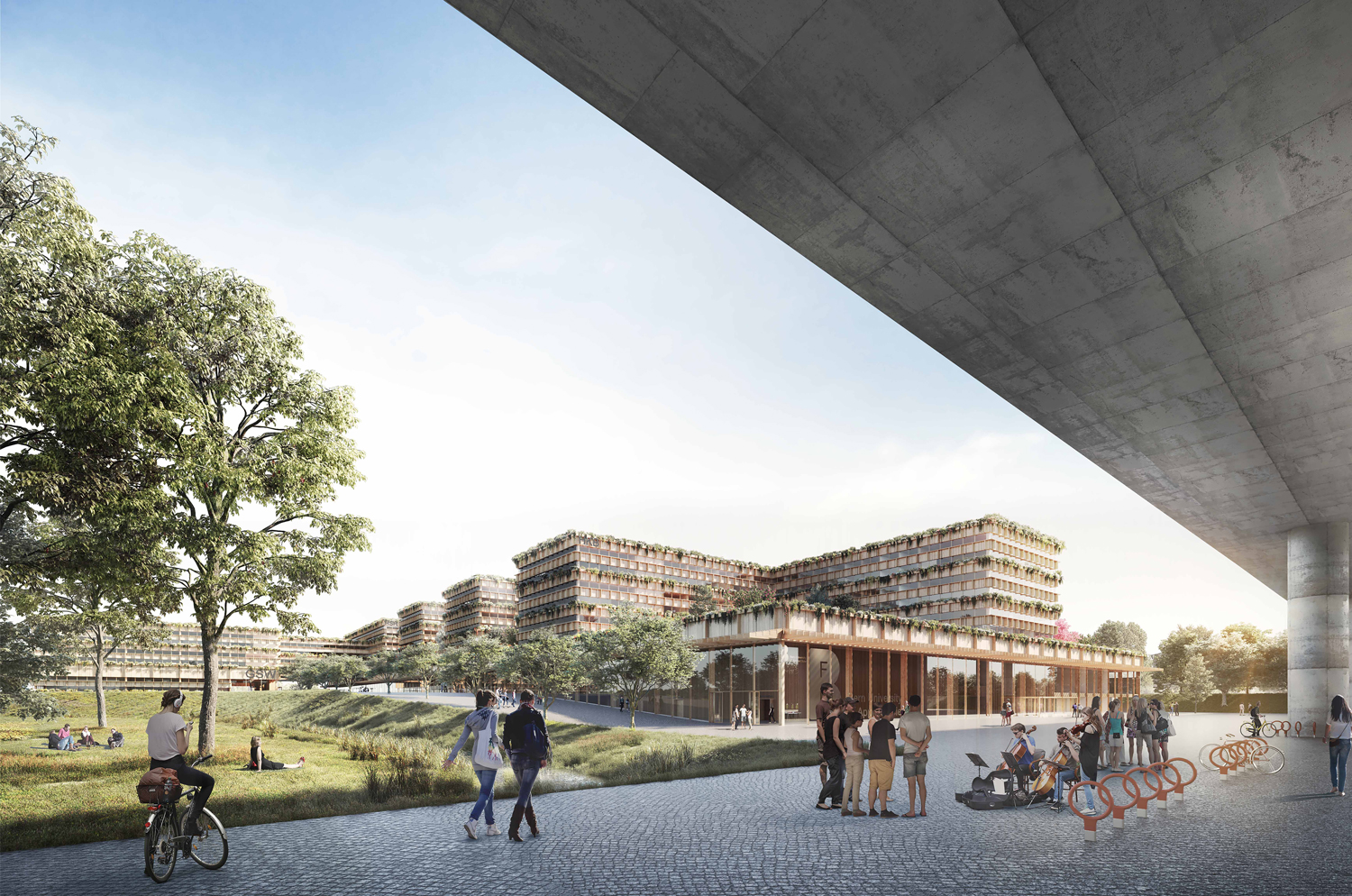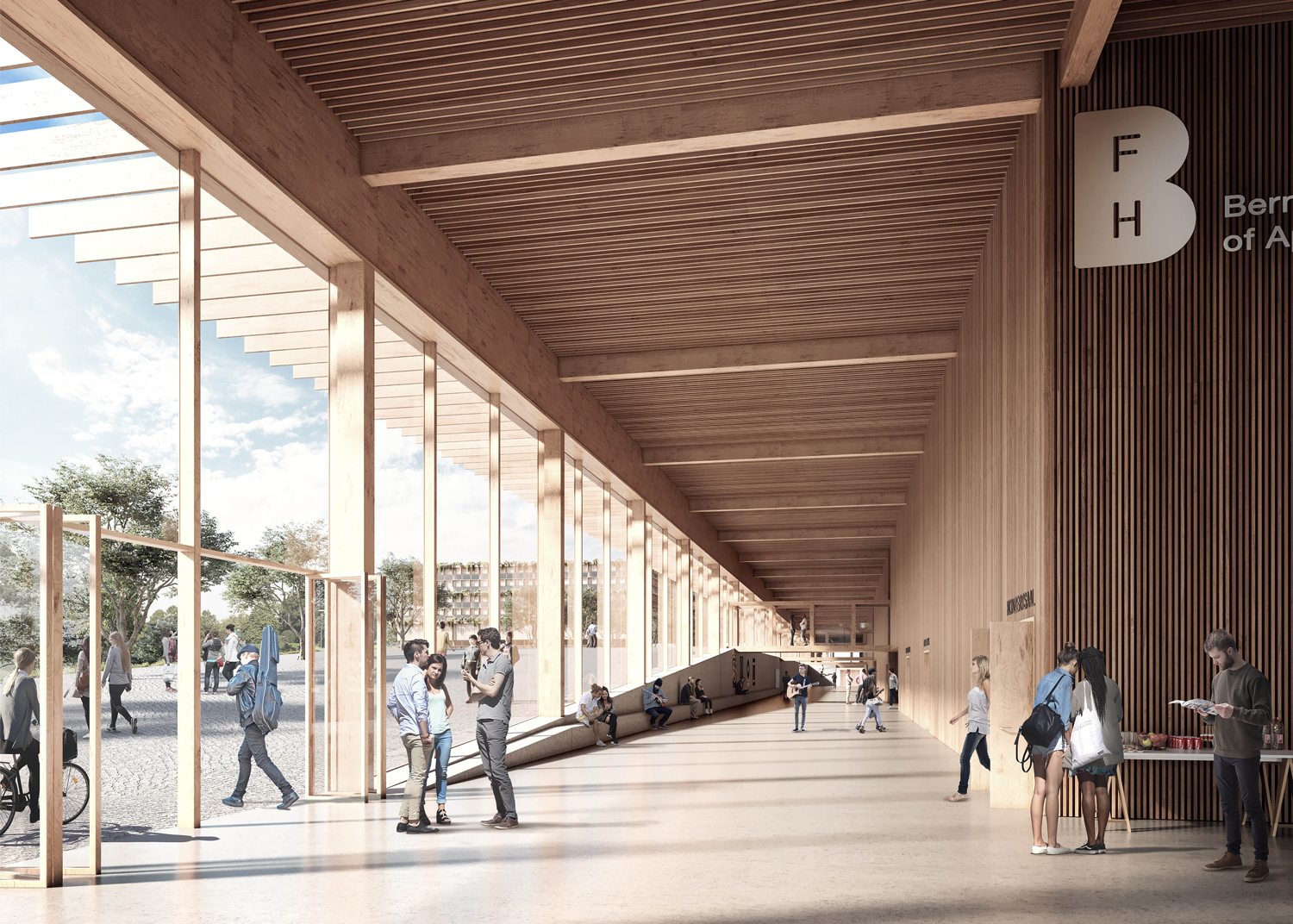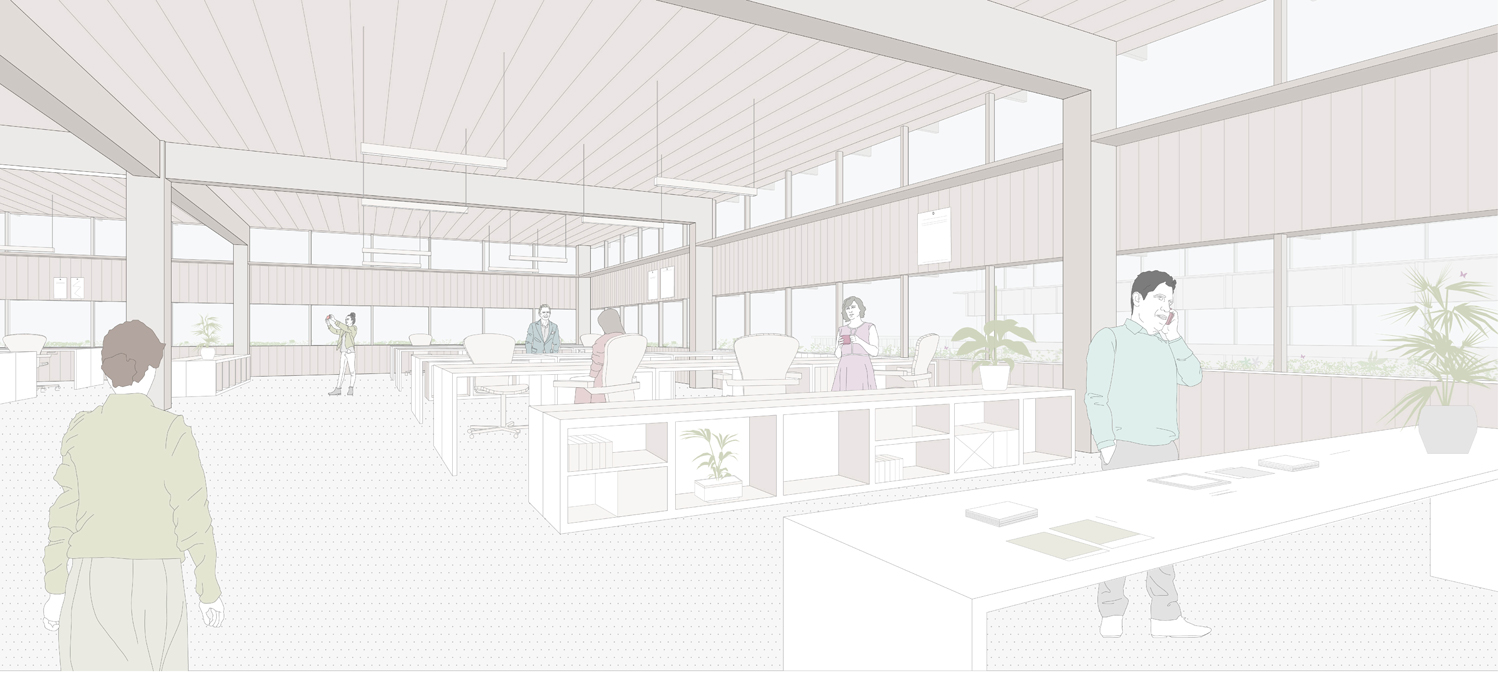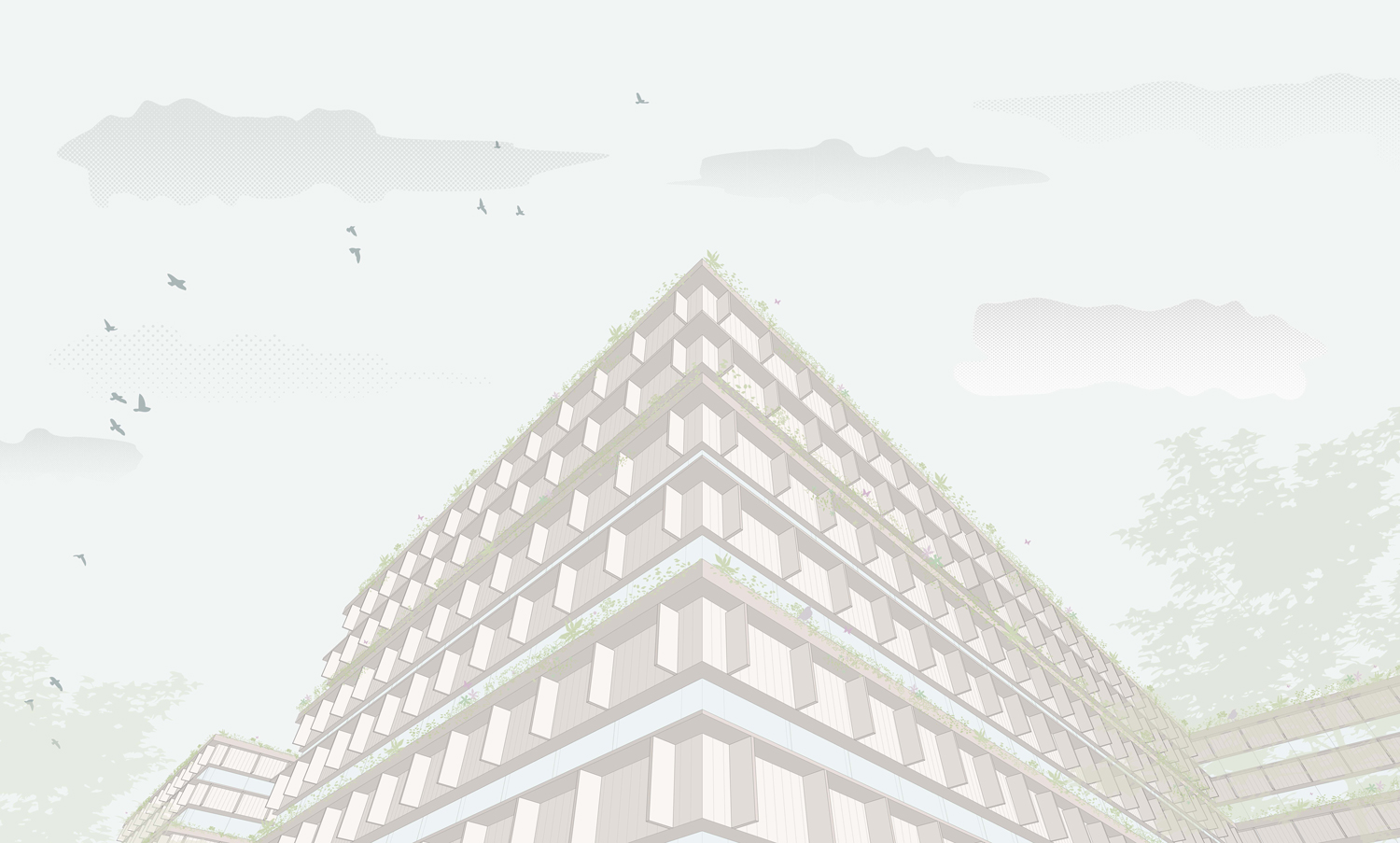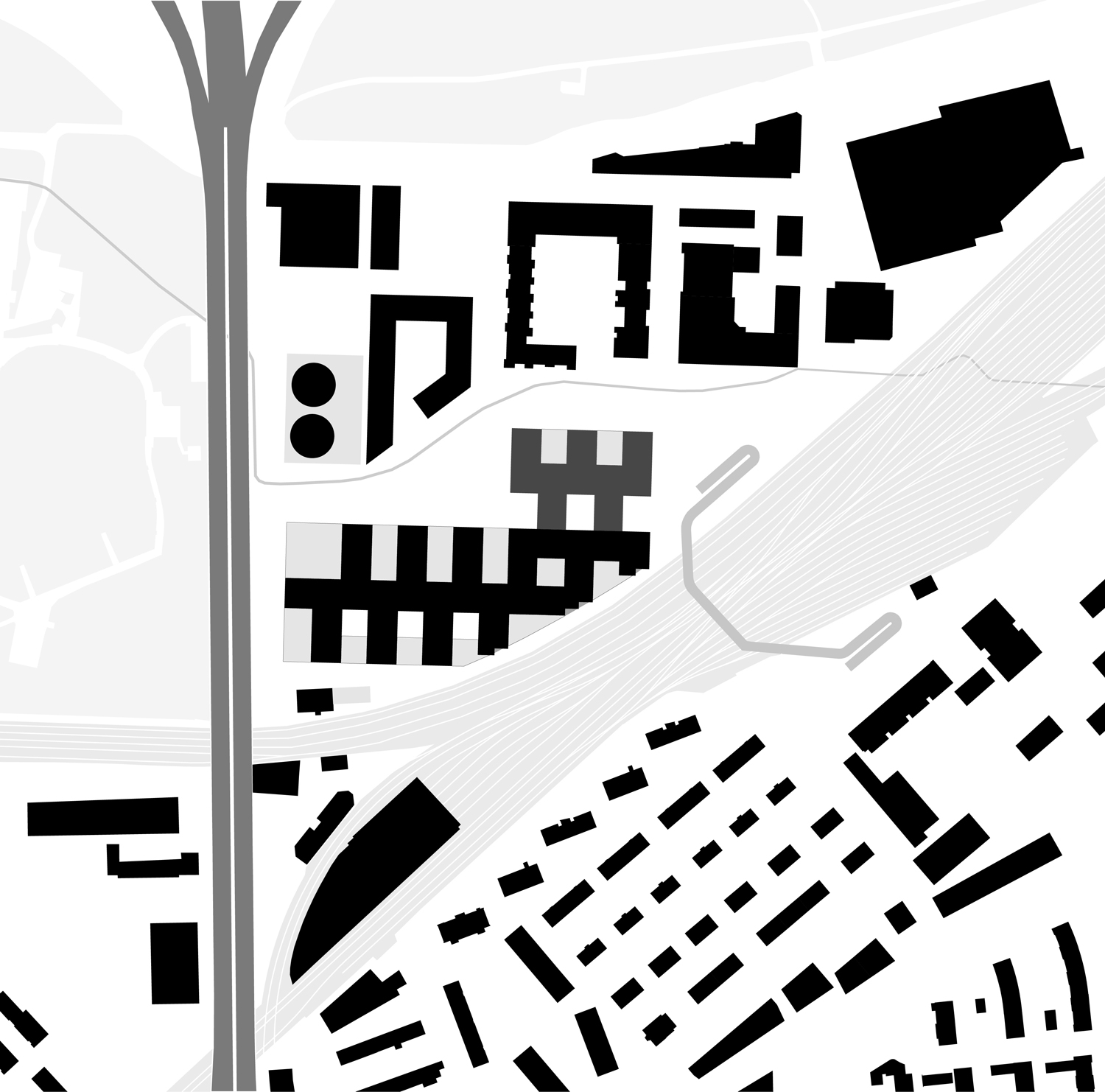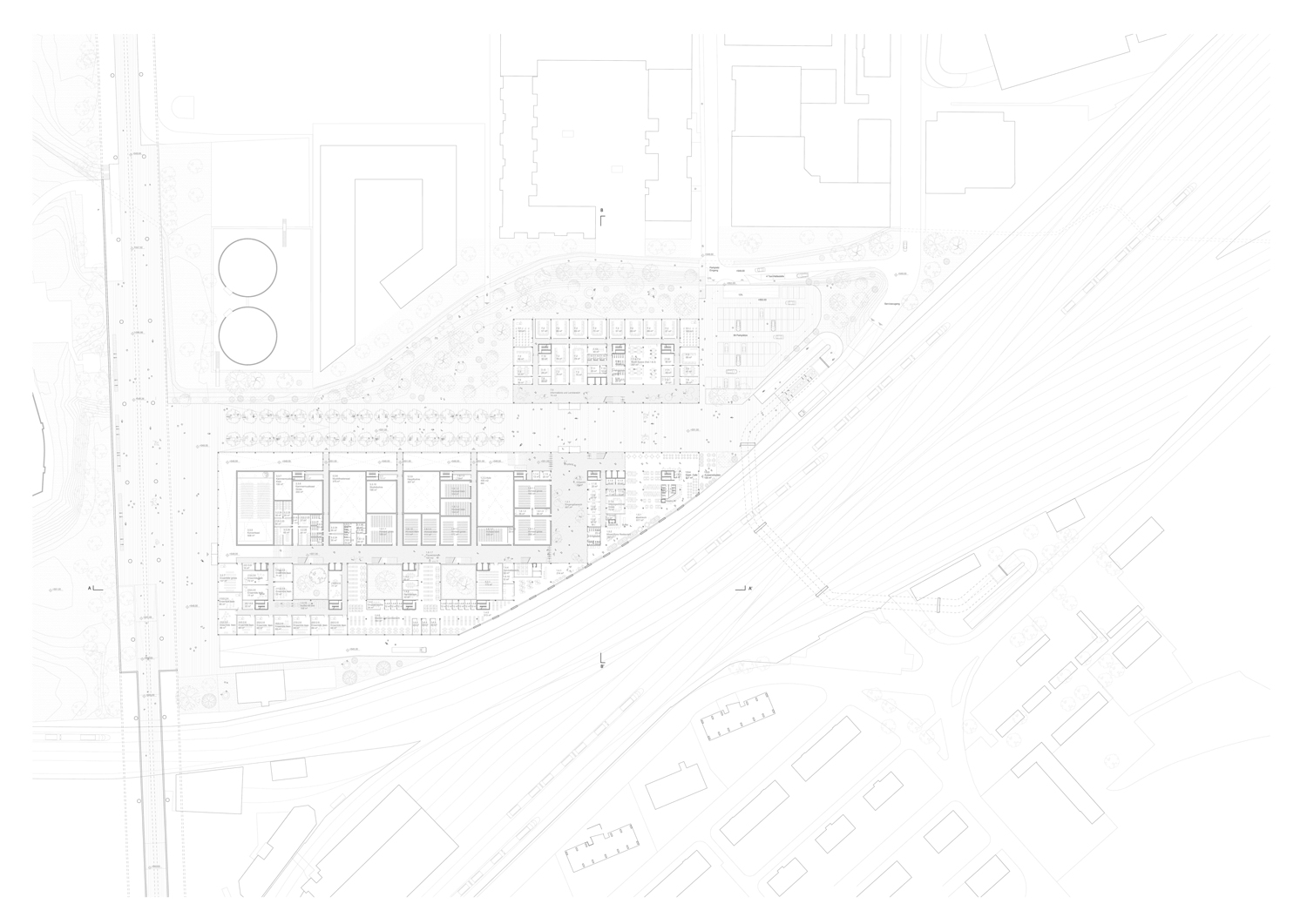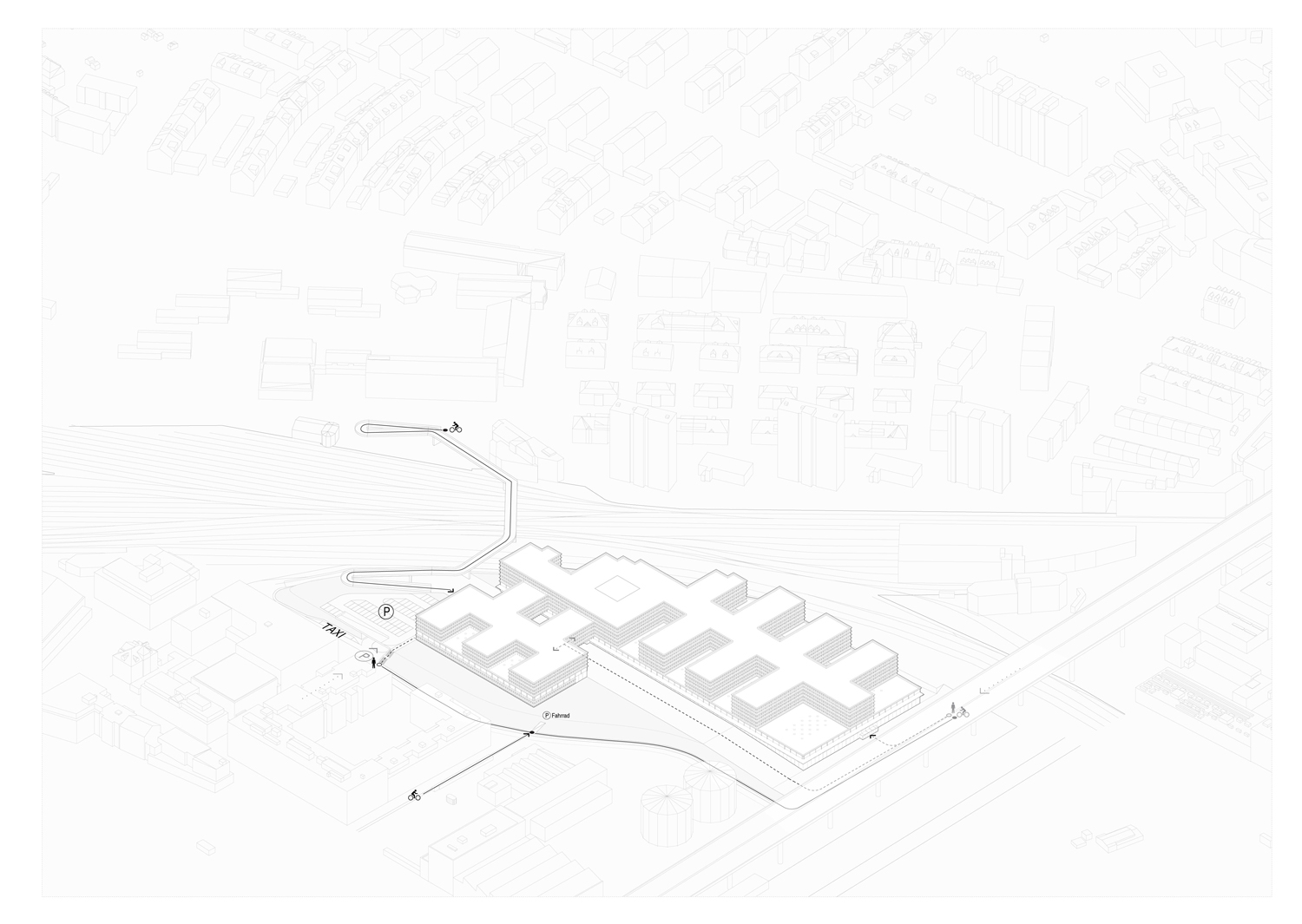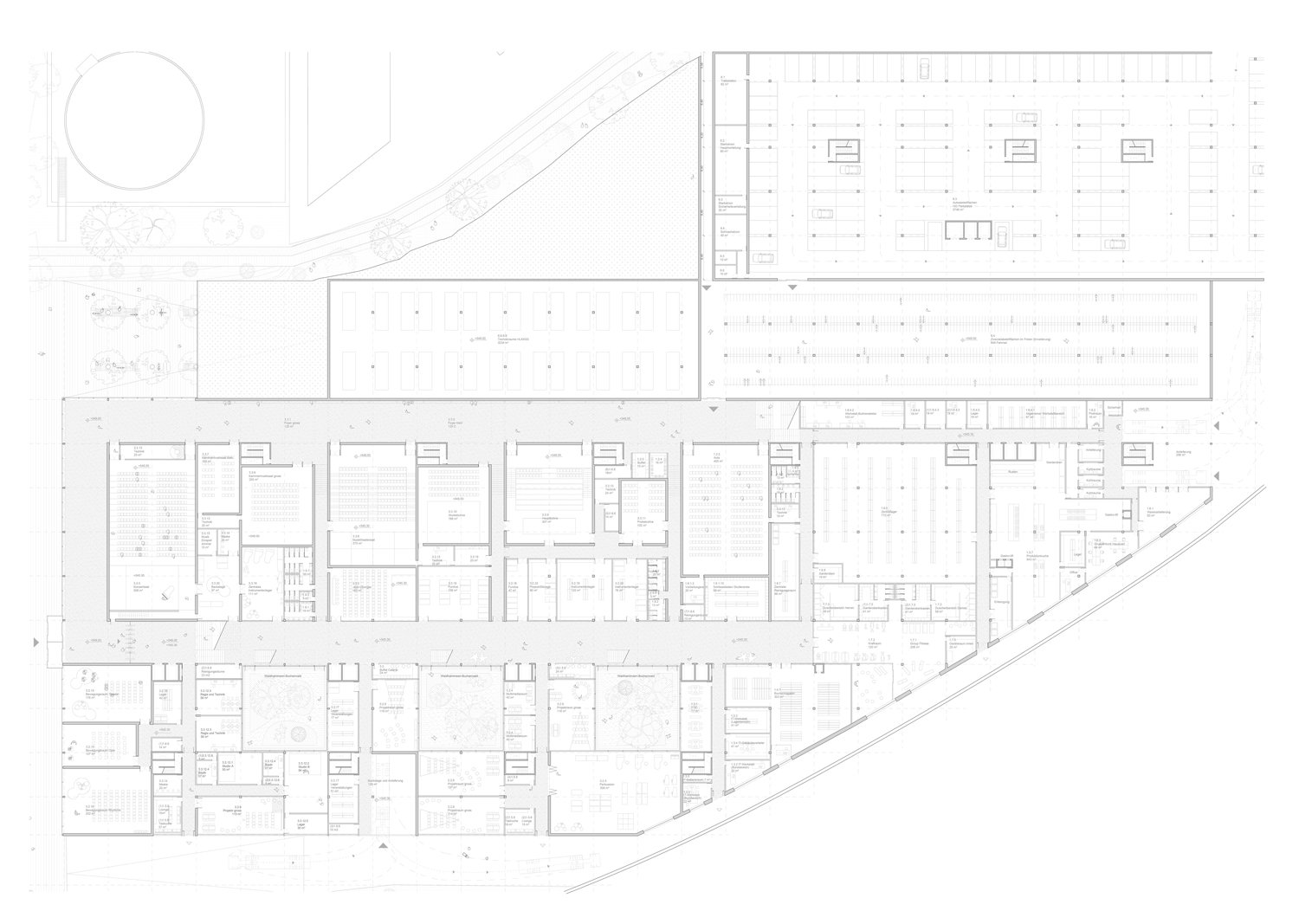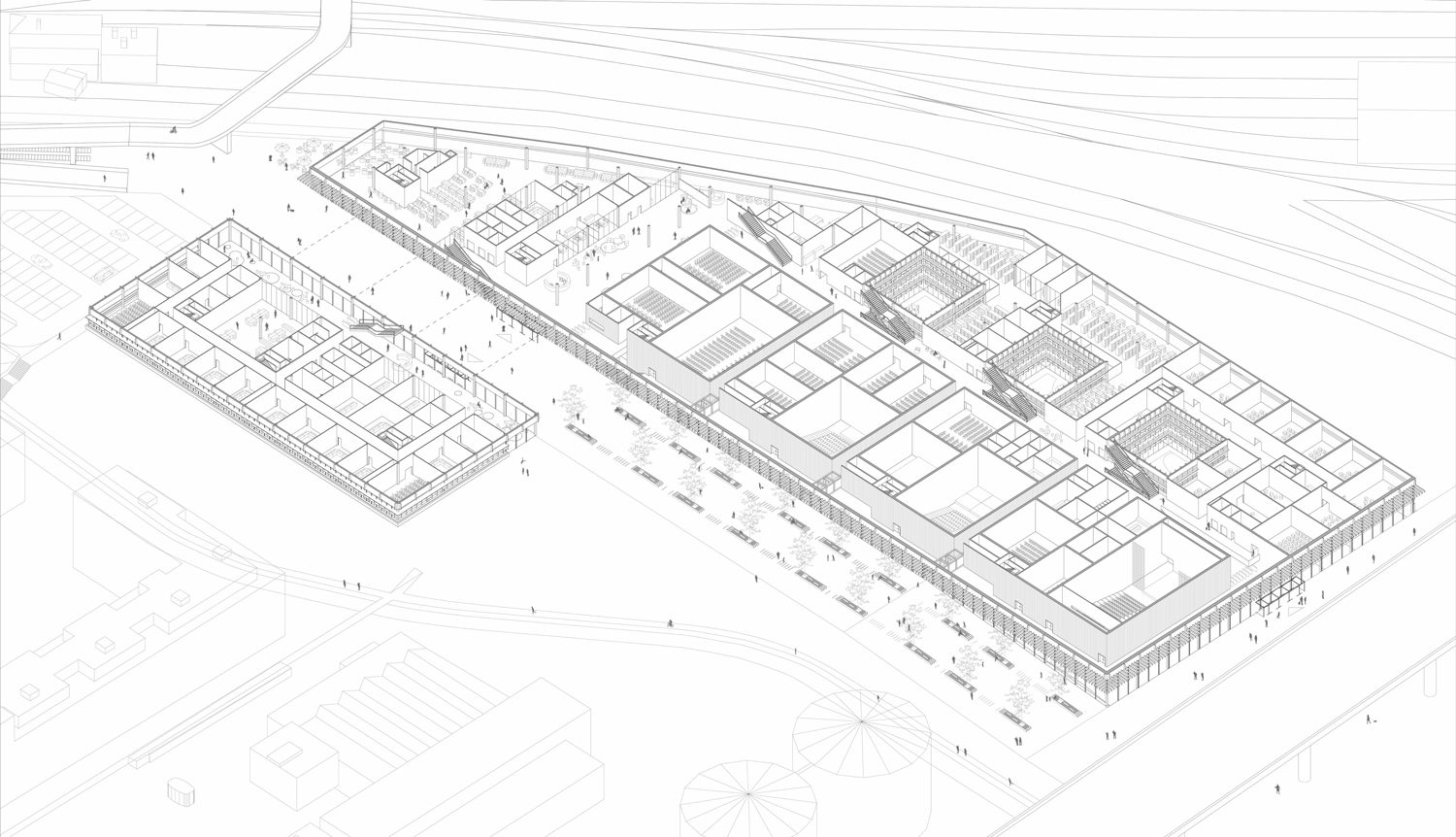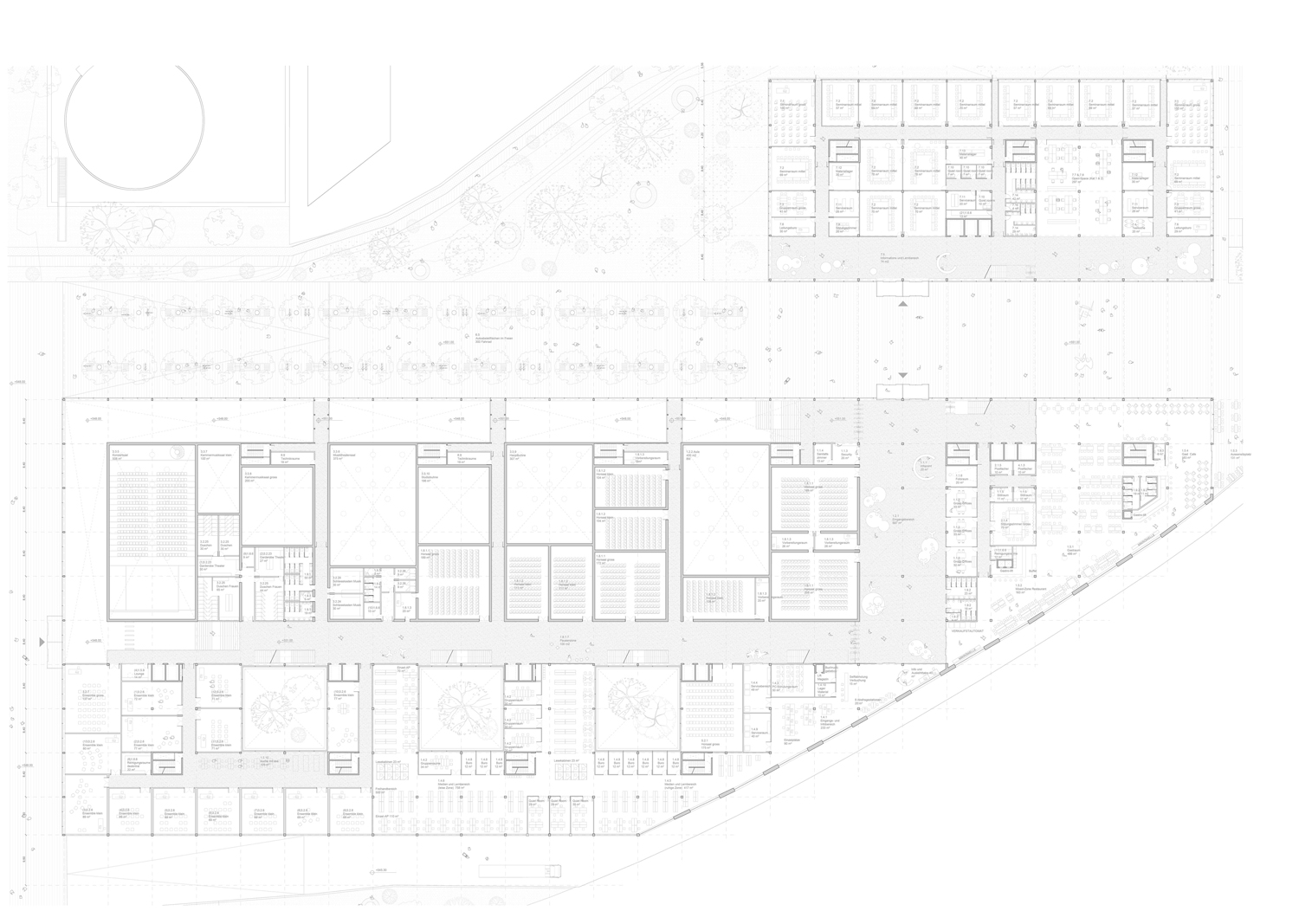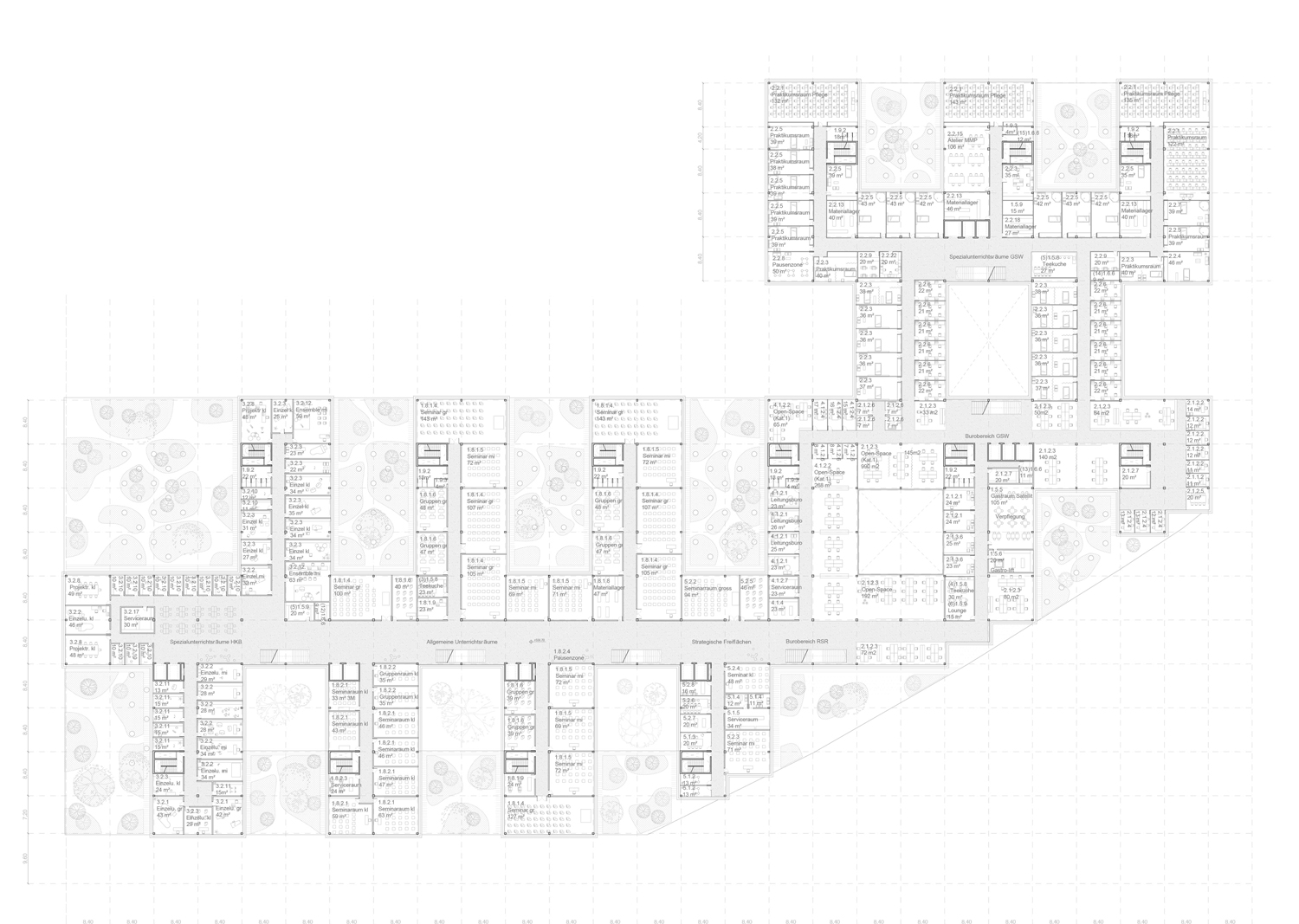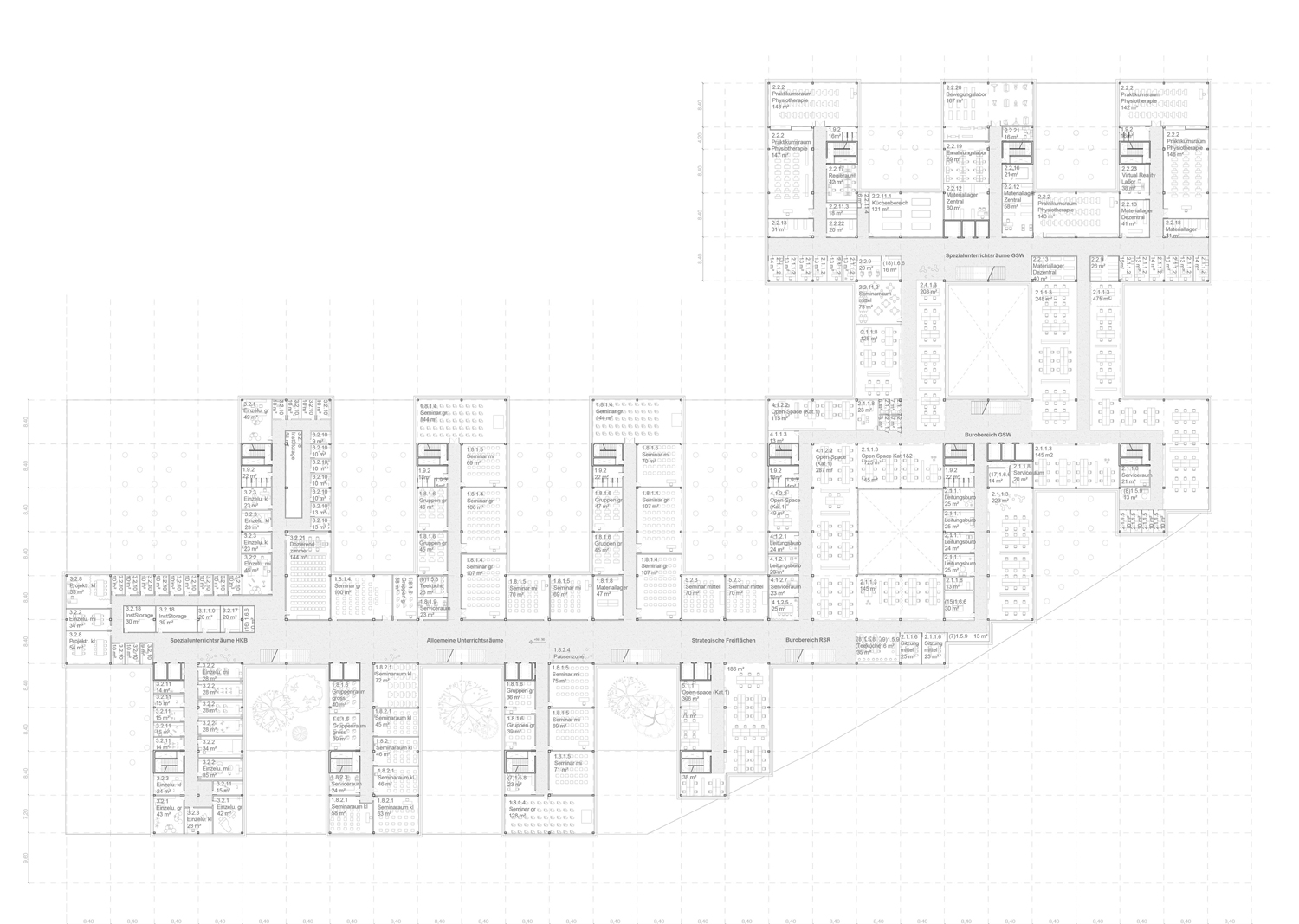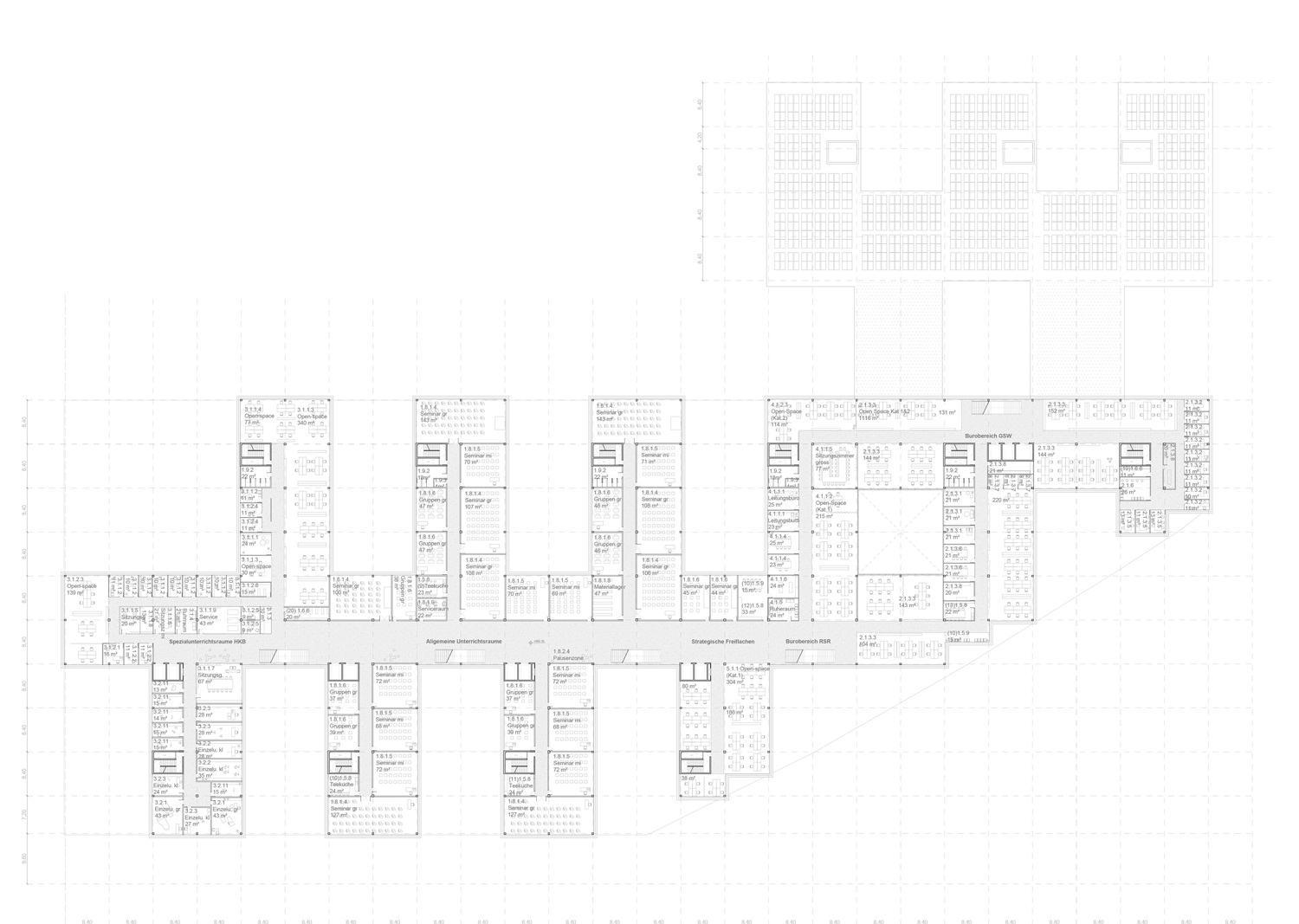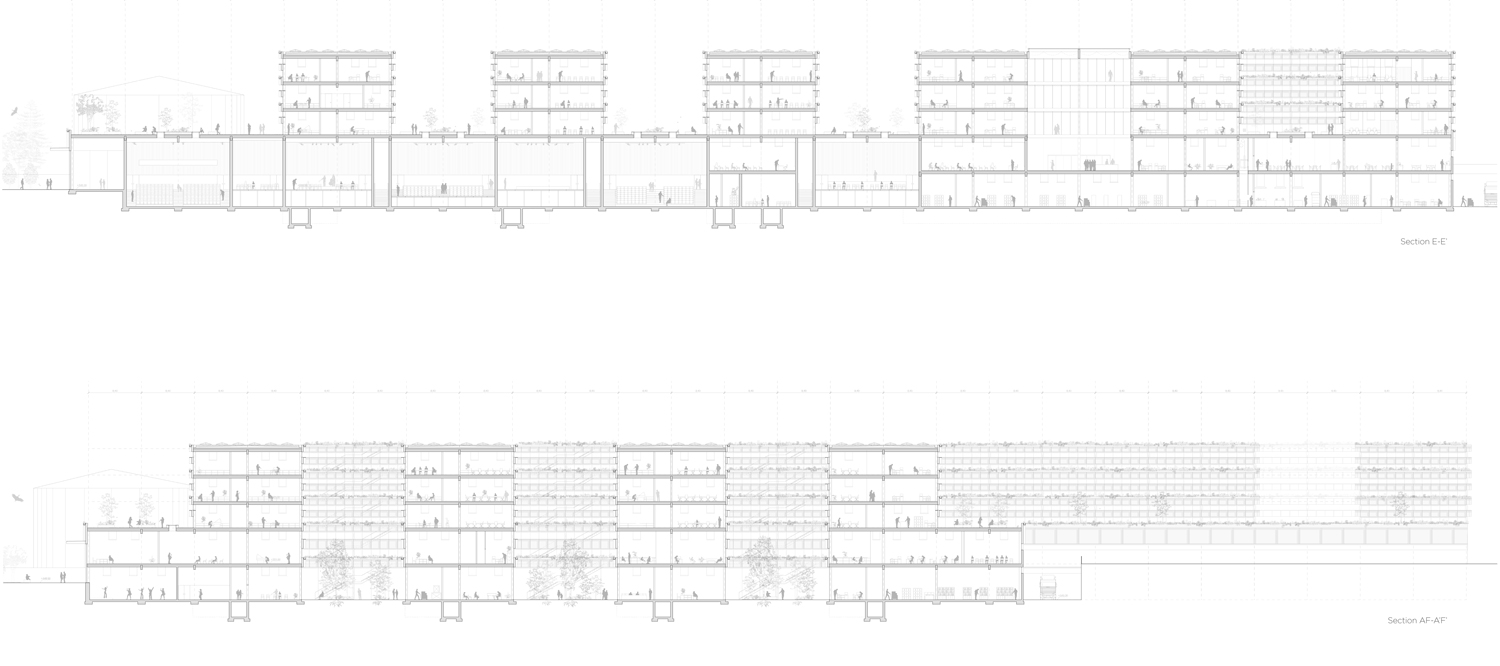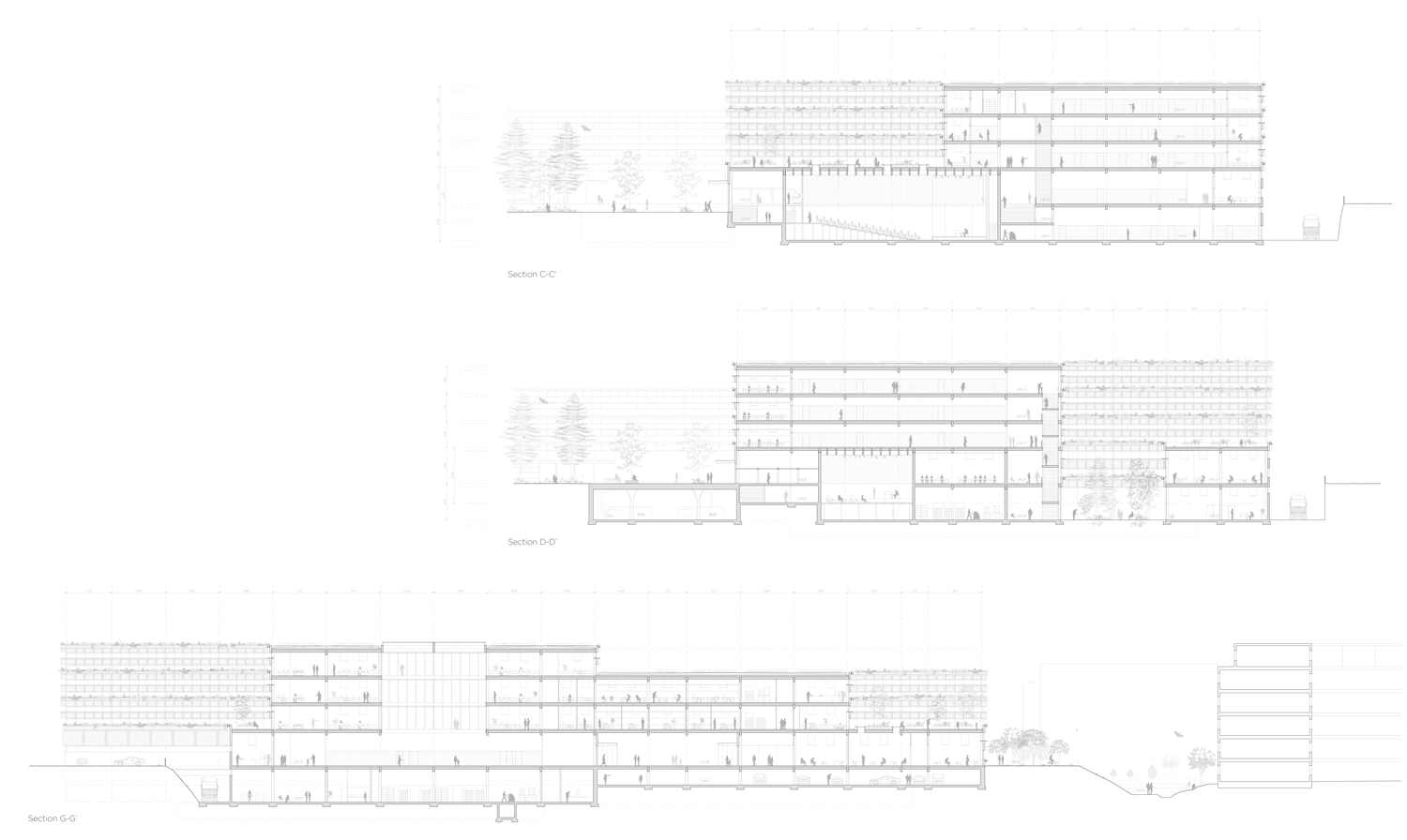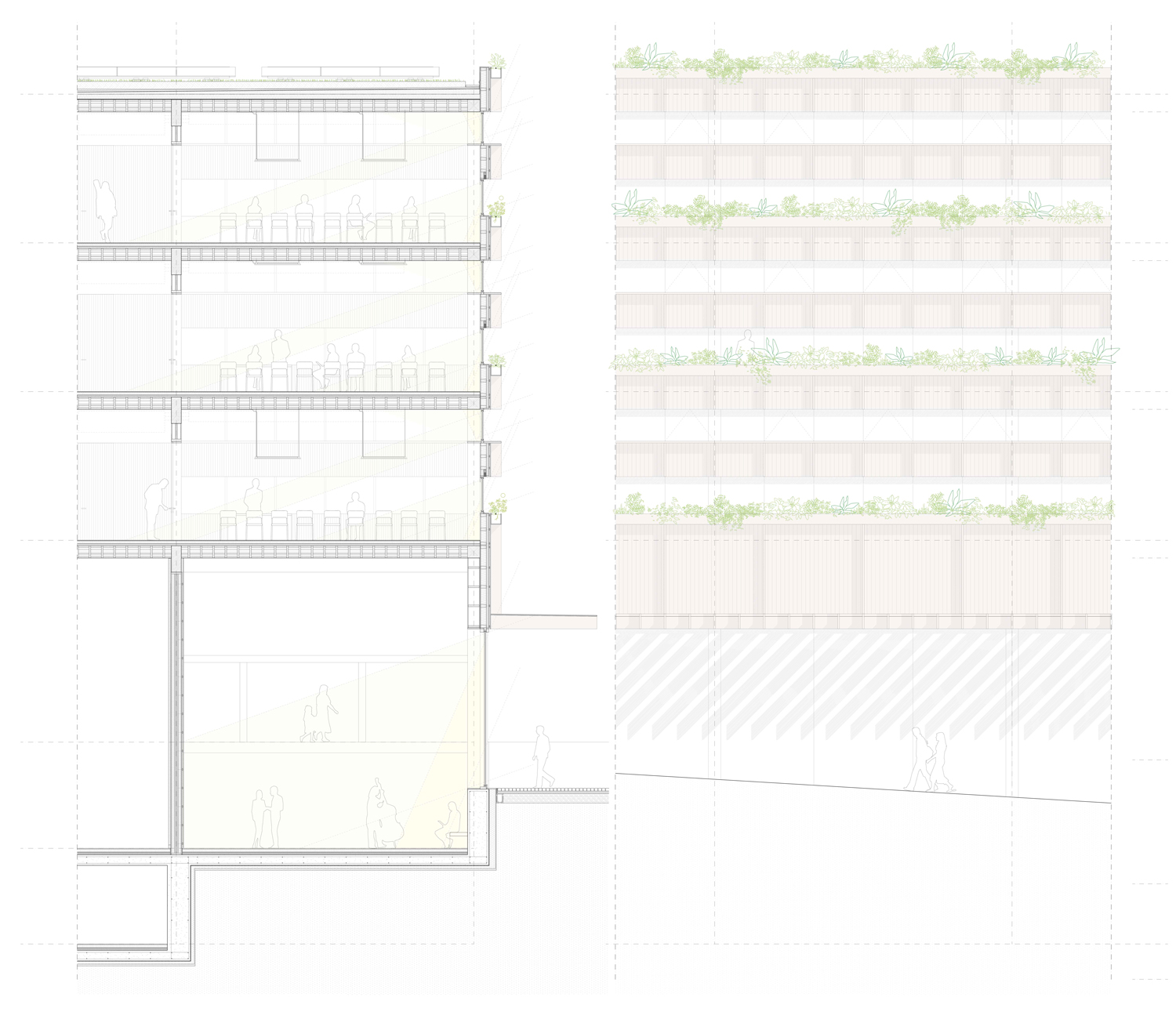☉ BFH Campus Bern is a proposal by AZPML for Bern City Council in 2018. It is located in Bern Switzerland in an urban setting. Its scale is large with a surface of 50.000 sqm a budget of 250.000.000 € and a ratio of 5.000 €/sqm. Key materials are concrete, wood and vegetal. Play-Time collaborated as visualizer.
Our proposal for the new Campus of the Technical Schools in Bern aims to provide a functional solution, capable to provide flexibility and an outstanding environmental performance, while creating a distinctive identity for the building.
Our proposal aims to break the project’s massing into a more intricate mass which exposes the necessary voids to the outside of the mass to break down the bulkiness of the mass, while opening all the spaces in the building to external courtyards and views, rather than into internal atriums or courtyards.
The project aims to express the mixture between the natural and the artificial. The project aims to explore the extraordinary diversity of landscapes comprising the wooded hills of the Bernese Jura, a broad central plateau dotted with magnificent lakes and the rugged majesty of the Bernese Oberland, and the traditions of craftmanship and precision manufacturing which characterize the Bern Canton.
While the parti of the project is radically simple in its geometry and organization, the detail of the façade is intricate as if made by a craftsman, with protruding shelves which will reflect daylight or hold potted plants. The vegetation of the façade connects with deeply rooted traditions in the canton and Bern city, where it is not uncommon to see planters installed on the facades of buildings as a traditional form or decoration. While the geometry of the project is rigorously orthogonal and artificial, it only acts as a counterpoint for the organic forms of the plants that will cover the facades and populate the raised gardens around which the program is organized.
The landscaping of these courtyards will provide a collection of the diverse assemblages of vegetation which populate the multiple landscapes of the Bernese geography, differentiating the building mass, producing different atmospheres within an efficient and flexible structure.
The fenestration of the project has been designed in order to optimize the environmental performance of the façade. Our proposal is to use a double band of horizontal windows, which allows to reduce the glazed area while maintaining the daylight ingress at the top of the room (the most efficient location for windows in terms of daylight provision) while providing also a lower fenestration band which will enable clear views to the outside.
The required programs are distributed through the complex in relation to their acoustic sensitivity and proximity to public and logistic access. The collection of event spaces with public access and ancillary facilities have been located in the most public area of the project, next to the main public transport hubs, and away from the rail tracks, to avoid low-frequency vibration from the trains. These facilities are located on the first basement level and opened to a Gallery space running along the Main Campus Boulevard, grouping the foyer spaces into a single monumental one which can also be used for exhibitions and public events when needed.
